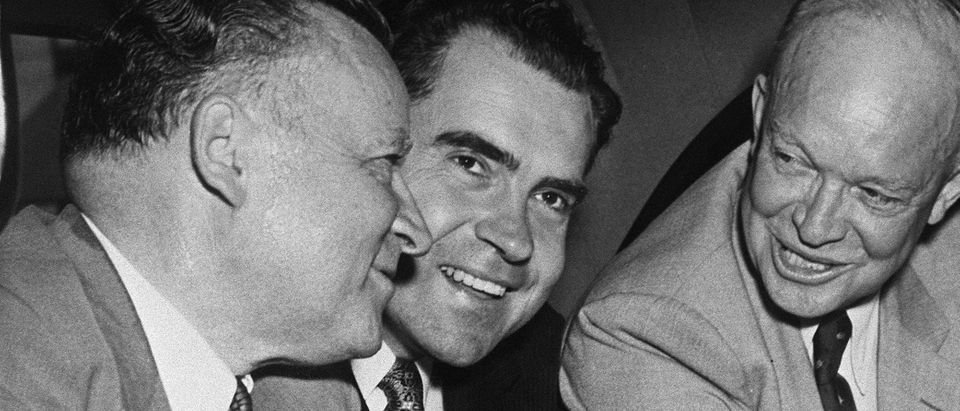President Dwight Eisenhower filled a vacant Supreme Court seat by recess appointment less than a month away from the 1956 presidential election.
Politico Magazine contributing editor Bill Scher noted Saturday that this is a potential option for President Donald Trump as he seeks to fill the seat made vacant by the death of Supreme Court Justice Ruth Bader Ginsburg.

President Donald Trump speaks to supporters during a rally at the Bemidji Regional Airport on September 18, 2020 in Bemidji, Minnesota. Trump and challenger, Democratic presidential nominee and former Vice President Joe Biden, were both campaigning in Minnesota Friday. (Photo by Stephen Maturen/Getty Images)
Scher tweeted that “Eisenhower installed [William] Brennan by recess appointment in Oct. ‘56, less than 1 month before Election Day[.] He did so for crude political reasons; he wanted to name a Catholic Democrat to help hold on to northeast states[.]”
…Eisenhower installed Brennan by recess appointment in Oct. ’56, less than 1 month before Election Day
He did so for crude political reasons; he wanted to name a Catholic Democrat to help hold on to northeast states
This is from the book “Justice Brennan: Liberal Champion”… pic.twitter.com/AULFyJilI0
— Bill Scher (@billscher) September 19, 2020
Scher added, “the Senate is scheduled to go into recess sometime after October 9 …. Trump can then name a Justice, without hearings, without votes, and put him or her on the Court immediately.”
…the Senate is scheduled to go into recess sometime after October 9 https://t.co/ZCfp9B9WXm Trump can then name a Justice, without hearings, without votes, and put him or her on the Court immediately…
— Bill Scher (@billscher) September 19, 2020
The only catch is that Trump, if reelected, will still have to formally nominate his choice in the New Year and the Senate will still have to confirm that decision. (RELATED: Lindsey Graham Backs Trump’s Push To Fill Ginsburg Seat)
Ginsburg passed away Friday at the age of 87.
Trump indicated Saturday that he intends to nominate a replacement “without delay” and Senate Majority Leader Mitch McConnell has promised to deliver a vote on that nomination.
In February 2016, The Washington Post raised the precedent of a recess appointment when a fact-check article discussed how the Republicans were then refusing to hold hearings for former President Barack Obama’s Supreme Court nominee, Merrick Garland.
The article noted that not only did Eisenhower successfully appoint Justice William Brennan to the Supreme Court in October 1956 without any partisan objection from the Democratic-controlled Senate, but Brennan was officially nominated and confirmed the following year when Eisenhower was inaugurated for his second term of office. (RELATED: Schumer, Waters Warn Republicans Not To Try To Fill Ginsburg’s Seat Before Election)
According to the Post, Eisenhower appointed Brennan for the same reason as cited by Scher: Brennan was a Roman Catholic Democrat whom Eisenhower wanted to nominate to keep northern Catholics in the Republican president’s camp.

President Donald Trump walks to speak to members of the press prior to his departure from the White House on September 19, 2020 in Washington, DC. President Trump is traveling to North Carolina for a campaign rally. (Photo by Sarah Silbiger/Getty Images)
According to Scher, there are definite risks to Trump making a recess appointment but incentives as well.
“A recess appointment may be the best base-juicing option. He gets credit for stretching the rules to the limit in service of their interests, but can still dangle the carrot at rallies: you better show up and vote if you want to keep it!”
But from Trump’s perspective, a recess appointment may be the best base-juicing option. He gets credit for stretching the rules to the limit in service of their interests, but can still dangle the carrot at rallies: you better show up and vote if you want to keep it!
— Bill Scher (@billscher) September 19, 2020


